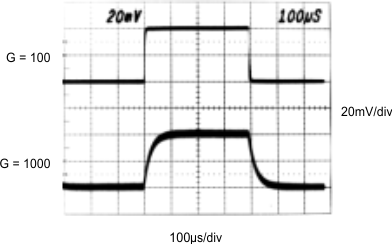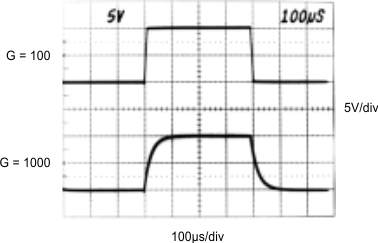ZHCSJN1C September 2000 – September 2022 INA118
PRODUCTION DATA
- 1 特性
- 2 应用
- 3 说明
- 4 Revision History
- 5 Device Comparison Table
- 6 Pin Configuration and Functions
- 7 Specifications
- 8 Detailed Description
- 9 应用和实现
- 10Device and Documentation Support
- 11Mechanical, Packaging, and Orderable Information
7.6 Typical Characteristics
at TA = 25°C, VS = ±15 V (unless otherwise noted)
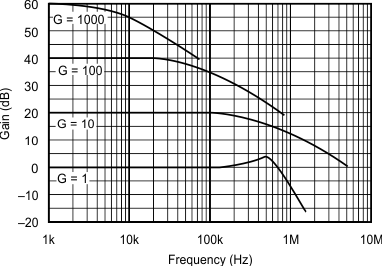
| VS = ±15 V | ||
| VS = 5 V | ||
| G = 1 |
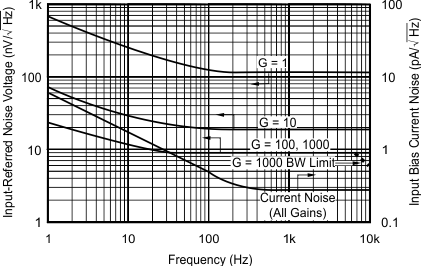
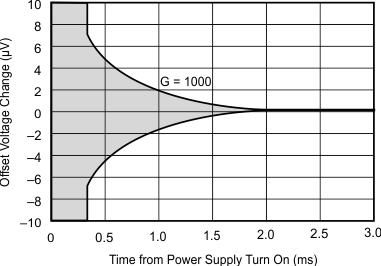
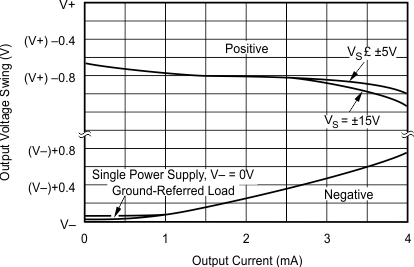
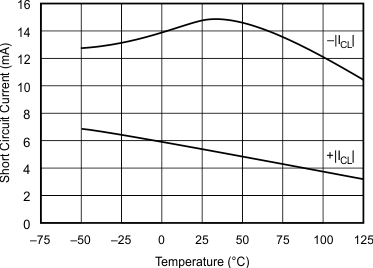
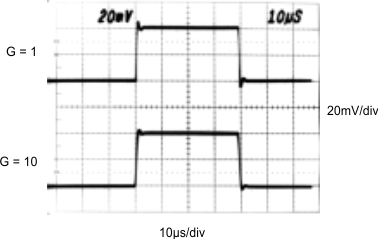
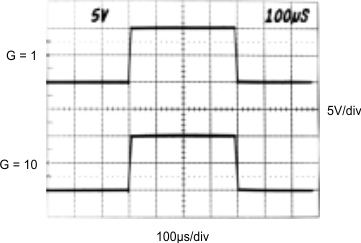
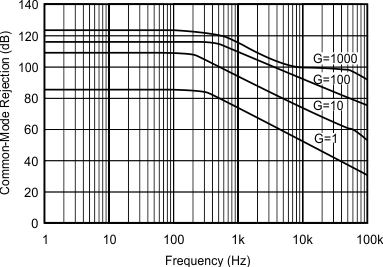
| VS = ±5 V | ||
| VS = 5 V | ||
| G = 100 |
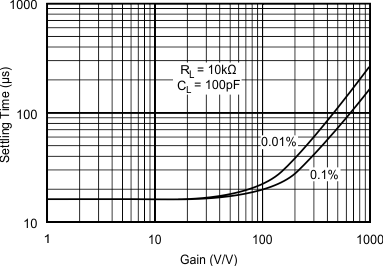
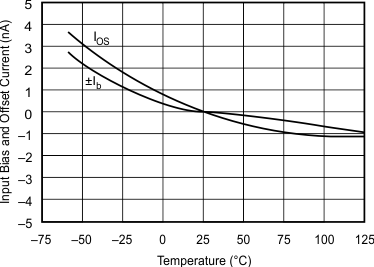
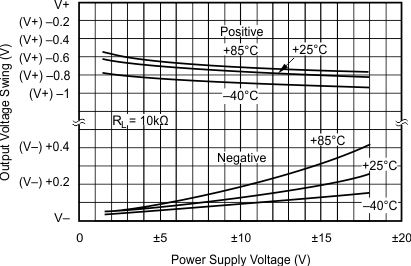
| G = 1000 | ||
